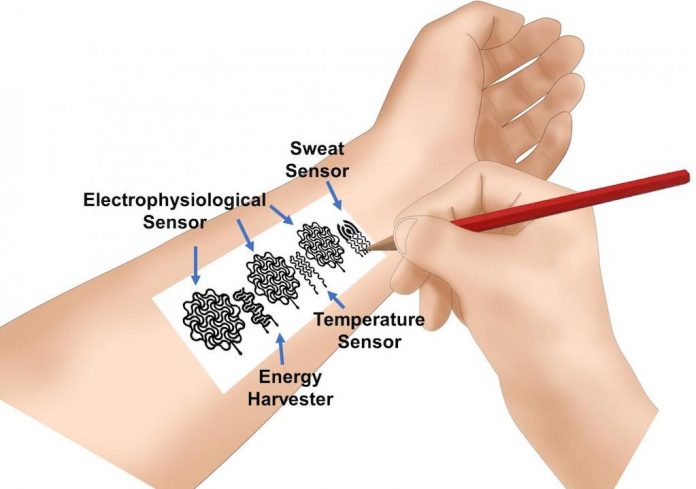One day, people could monitor their own health conditions by simply picking up a pencil and drawing a bioelectronic device on their skin, according to researchers.
In a study, University of Missouri engineers have used pencils and paper to show how these devices may be used to monitor personal health.
According to Zheng Yan, an assistant professor in the College of Engineering, existing commercial on-skin biomedical devices often contain two major components — a biomedical tracking component and a surrounding flexible material, such as plastic, to provide a supportive structure for the component to maintain an on-skin connection with a person’s body.
In the study, the researchers discovered that pencils containing more than 90% graphite are able to conduct a high amount of energy created from the friction between paper and pencil caused by drawing or writing.
Specifically, the researchers found pencils with 93% graphite were the best for creating a variety of on-skin bioelectronic devices drawn on commercial office copy paper. Mr. Yan said a biocompatible spray-on adhesive could also be applied to the paper to help it stick better to a person’s skin.
The research group’s next step would be to further develop and test the use of the biomedical components, including electrophysiological, temperature and biochemical sensors, according to the university.
“For example, if a person has a sleep issue, we could draw a biomedical device that could help monitor that person’s sleep levels,” says Mr. Zhang. “Or in the classroom, a teacher could engage students by incorporating the creation of a wearable device using pencils and paper into a lesson plan.
An additional benefit to their approach, Mr. Yan said, is that paper can decompose in about a week, compared to many commercial devices that contain components that are not easily broken down.
Funding for the research was provided by a University of Missouri start-up fund, and grants from the National Science Foundation, the Air Force Office of Scientific Research and the National Institutes of Health.
[Image courtesy: University of Missouri]
